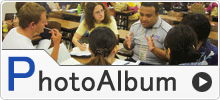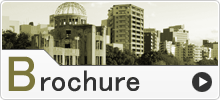| The Atomic-Bombing of Hiroshima and Nagasaki: A Crime Against Humanity |
On the 6th of August 1945 an atomic bomb was dropped on Hiroshima and on the 9th of the same month another was dropped on Nagasaki. The blast, heat rays and radiation caused by the explosion devastated both cities. Residents, including the elderly and children living in the affected areas were killed instantly. However, the victims of the bombs were not only Japanese nationals, but also Koreans and Chinese who were forced to live in Japan, and Allied prisoners of war captured by the Japanese military. Tens of thousands of people also died soon after the bombs were dropped. It is estimated that by the end of 1945 one hundred and forty thousand people had died in Hiroshima and seventy thousand in Nagasaki. Even today, victims of the atomic bomb still suffer from the effects of radiation and are living in constant pain. Following Japan's defeat at the end of World War II, Japanese war leaders and war criminals were prosecuted before the International Military Tribunal of the Far East (the so-called 'Tokyo Tribunal'). At this tribunal, Ben Bruce Blakeny, one of the American defense attorneys, argued that the atomic bomb was a weapon banned by the Hague Convention, and thereby attempted to point out the criminality of the bombings of Hiroshima and Nagasaki. Yet, the tribunal dismissed his argument, claiming that the issue was outside the jurisdiction of the tribunal. Since then, some efforts have been made, both in Japan and overseas, to appeal to the court to argue the criminal nature of nuclear arms, but so far no cases have been successful. This lecture examines the criminality of the atomic bombings of Hiroshima and Nagasaki and the responsibility of the American political and military leaders who were closely involved in the decision-making and in executing the order to drop the bombs. The criminality is examined in relation to international law effective at the time that the bombs were dropped as well as the Charter of the Tokyo Tribunal. Yuki Tanaka,‘Photographer Fukushima Kikujiro -- Confronting Images of Atomic Bomb Survivors,’ posted at Japan Focus ( http://japanfocus.org/-Yuki-TANAKA/3623), October 2011 'Fire Bombing and Atomic Bombing: An Historical Perspective on Indiscriminate Bombing' posted at Japan Focus (http://japanfocus.org/products/details/1582) May 2005 'Indiscriminate Bombing and the Enola Gay Legacy' posted at Japan Focus (http://japanfocus.org/products/details/1807) December 2003. Name:Yuki TANAKA Present Post and Title: Professor, Hiroshima Peace Institute, Hiroshima City University Final Education: University of Western Australia, Ph.D. Specialized Field: War Crimes and War History Recent Publications: * Genpatsu to Hiroshima [Nuclear Power and Hiroshima], co-authored with Peter Kuznick and published as an Iwanami Booklet (Tokyo: Iwanami Shoten, 2011), 68pp. * Japan's Comfort Women: Sexual Slavery and Prostitution during World War II and the US Occupation (with Foreword by Susan Brownmiller) (London: Routledge, 2002), 212pp. * Beyond Victor's Justice: The Tokyo War Crimes Trial Revisited (Leiden, Martinus Nijhoff Publisheres, 2011), 420pp., co-edited with Tim McCormack and Gerry Simpson. * Bombing Civilians: A Twentieth-century History (New York: The New Press, 2009), 291pp., co-edited with Marilyn B. Young. * Hiroshima: A Tragedy Never To Be Repeated (Translation with Jo King of work by Nasu Masaomi with illustration by Nishimura Shigeo) (Tokyo: Fukuinkan Shoten, 1998. This book is available at the bookshop in the Hiroshima Peace Memorial Museum.) |






